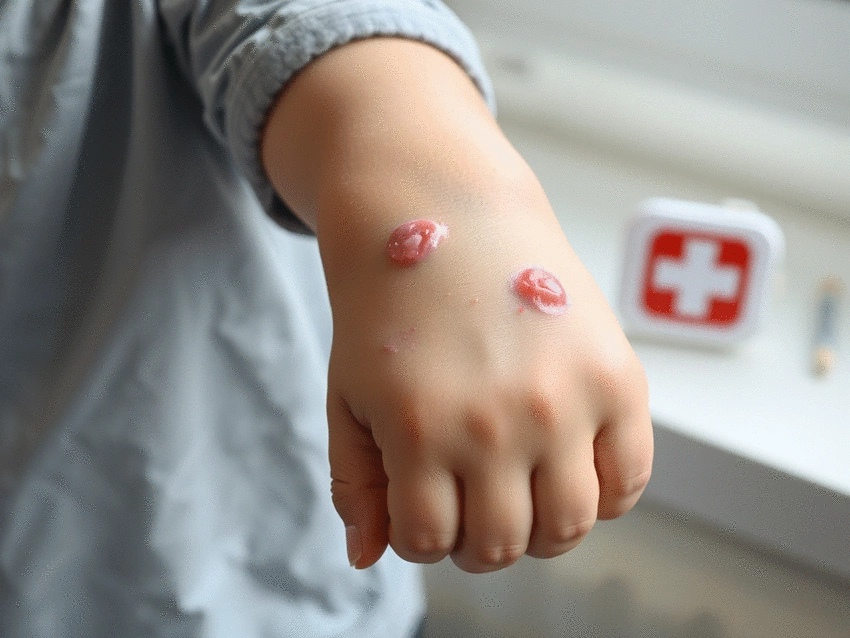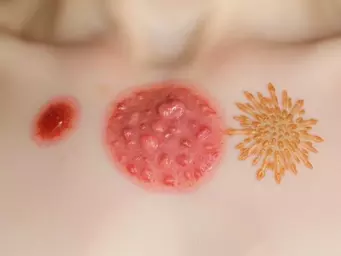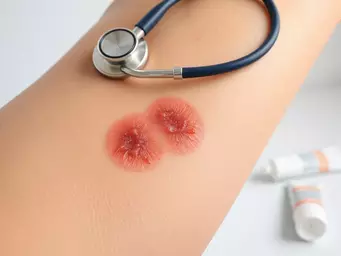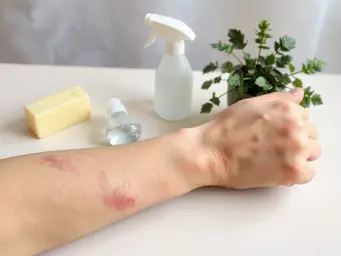Comparing Skin Rashes: Causes & Symptoms
By Clara Vandermeer / Oct 27
Staying informed about your skin health is more important than ever, especially when it comes to common infections like impetigo. With the right knowledge, you can protect yourself and your loved ones effectively.
Impetigo is a common skin infection, predominantly affecting children, but it can impact anyone. The visual below details the primary affected groups and the bacterial culprits behind this condition.
Impetigo primarily affects children, but certain conditions increase susceptibility across all age groups.
Impetigo is primarily caused by two types of bacteria that enter the skin through injuries.
Impetigo is a common skin infection that primarily affects children, though it can occur in individuals of any age. It’s often characterized by red sores that can quickly burst, ooze, and form a yellow-brown crust. As someone who is dedicated to empowering individuals with knowledge about skin health, I find it crucial to understand what impetigo is, who it impacts, and how to identify its causes.
This infection is particularly prevalent in warm, humid environments and is easily spread through direct contact. At What Are Rashes, we believe that understanding the basics of impetigo is the first step in taking proactive measures to manage skin health.
Impetigo is a superficial skin infection caused by bacteria that can lead to red sores, primarily around the mouth and nose. While it is most commonly seen in children aged 2 to 6 years, anyone can get it, especially those with compromised skin or weakened immune systems. Early recognition is vital for effective treatment and prevention of spreading. The CDC provides further details on impetigo, including demographics and prevalence.
Recognizing these affected groups helps in implementing preventive strategies. If you have young children or work in a caregiving setting, be particularly vigilant!
Impetigo is primarily caused by two types of bacteria: Staphylococcus aureus and Streptococcus pyogenes. These bacteria can enter the skin through cuts, insect bites, or abrasions, leading to infection. Understanding these triggers is essential for prevention.
By being aware of these causes, you can take preventive steps to minimize your risk. Remember, a little caution goes a long way in skin health!
The two primary culprits behind impetigo are Staphylococcus aureus and Streptococcus pyogenes. While both bacteria can cause impetigo, they have different characteristics and behaviors. Staphylococcus aureus tends to be more prevalent and can lead to more severe infections if left untreated.
Understanding these bacterial agents can help you identify possible sources of infection and take the necessary precautions. At What Are Rashes, we emphasize the importance of awareness in managing skin health effectively!
Did you know? Keeping your child's nails short and clean can significantly reduce the risk of impetigo spread? When children scratch sores, it creates an opportunity for bacteria to enter through the skin. Regular nail trimming and handwashing are simple yet effective strategies to help prevent this common skin infection!
Understanding impetigo is crucial for effective management and prevention. Early recognition of symptoms can make a significant difference in treatment outcomes. If you notice sores, rashes, or any unusual skin changes, don't hesitate! Addressing these signs promptly can lead to quicker healing and less chance of complications. Remember, the sooner you act, the better your chances of a smooth recovery.
At What Are Rashes, we believe that knowledge is power! With the right information, you can take proactive steps to manage your skin health effectively. Understanding how impetigo spreads and what to look for helps empower you in your skincare journey.
Recognizing the signs of impetigo early on is essential to preventing its spread and ensuring a swift recovery. Typical symptoms include honey-colored crusts, blisters, or sores, particularly around the nose and mouth. If you or a loved one experiences these symptoms, it's time to take action!
Remember, early treatment not only curtails the infection but also minimizes the risk of complications. I always encourage my readers to be vigilant about their skin health. After all, your skin is your body’s first line of defense!
Preventing impetigo involves a combination of good hygiene practices and awareness. Knowing how to care for your skin and recognizing potential triggers can significantly reduce the risk of infection. Here are some effective strategies:
By incorporating these practices into your daily routine, you not only protect yourself but also those around you. As a health writer, I emphasize the importance of community awareness in preventing outbreaks. When we all contribute to good hygiene, we create a healthier environment for everyone!
Staying informed is vital for effective management of impetigo. I invite you to engage with your healthcare providers regularly. Open discussions about skin health can lead to better understanding and treatment options. Don't be afraid to ask questions or share concerns!
Having an open line of communication with healthcare professionals can greatly benefit your skincare journey. Regular check-ups and discussions about skin health can lead to early detection of issues. Here are some tips to enhance your engagement:
By being proactive, you can foster a supportive relationship with your healthcare team. Sharing your experiences with impetigo can also help others feel less alone in their struggles!
Finally, spreading awareness about impetigo can significantly impact your community. Encourage friends and family to maintain good hygiene practices and learn about the signs of skin infections. Together, we can create a culture of care and prevention!
Being informed helps us all contribute to a healthier community. Let’s empower each other with knowledge and support one another in achieving healthier skin!
Here is a quick recap of the important points discussed in the article:

 Comparing Skin Rashes: Causes & Symptoms
In the realm of skin health, recognizing the different types of rashes can be the difference between
Comparing Skin Rashes: Causes & Symptoms
In the realm of skin health, recognizing the different types of rashes can be the difference between
 Identifying and Treating Ringworm
Have you ever wondered how a simple skin rash could create so much confusion? Understanding ringworm
Identifying and Treating Ringworm
Have you ever wondered how a simple skin rash could create so much confusion? Understanding ringworm
 Understanding Contact Dermatitis Causes
Everyday encounters with common products can lead to unexpected skin reactions. By understanding the
Understanding Contact Dermatitis Causes
Everyday encounters with common products can lead to unexpected skin reactions. By understanding the